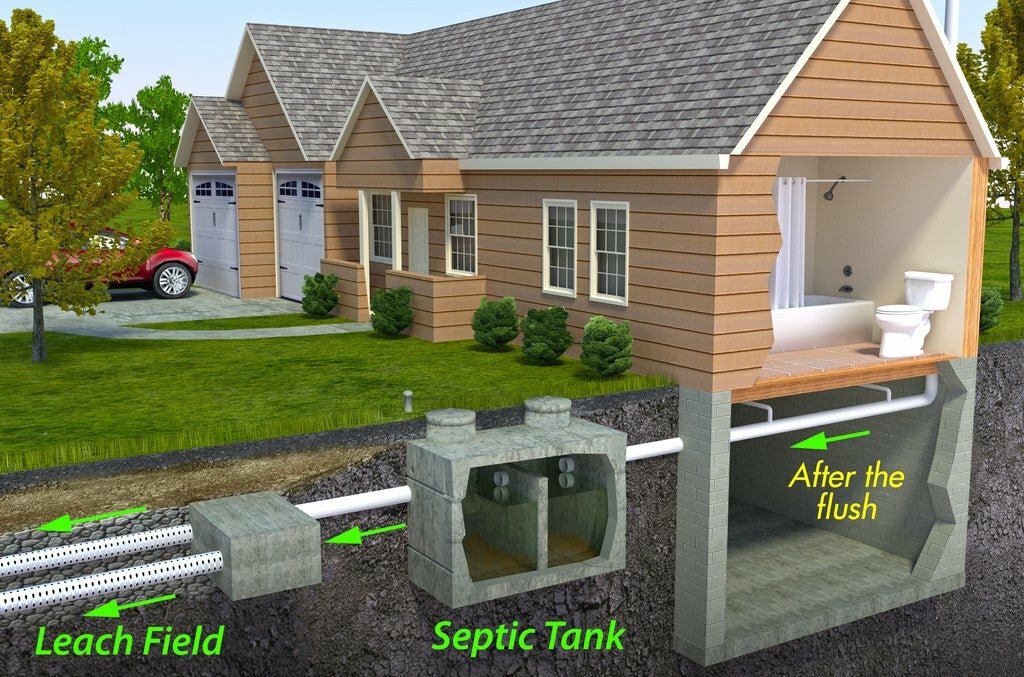If you’re a homeowner, you may wonder if every house has a septic tank or is connected to a public sewer system. Understanding whether your home relies on a septic tank and how these systems work is key knowledge for any homeowner. This article provides an overview of septic systems and insight into the factors that determine if a house utilizes a septic tank.
What is a Septic System?
A septic system is an underground wastewater treatment system commonly used in rural and suburban areas without access to municipal sewer lines. The two main components of a septic system are:
-
Septic tank – A large buried container that collects and separates wastewater solids from liquids.
-
Drain field – A network of pipes and trenches that filter wastewater discharge into the soil.
Microbes in the septic tank and soil provide treatment of contaminants. Periodic septic tank pumping is crucial for proper maintenance. When working correctly, septic systems provide effective, eco-friendly wastewater management.
What Percentage of Homes Have Septic Systems?
It’s estimated that over 20% of homes in the United States rely on septic systems. This amounts to over 26 million septic systems nationwide providing wastewater treatment, especially in rural areas.
For example, around 20% of new homes built in Texas utilize septic systems due to lack of access to sewer lines in suburban and rural locales. Areas with lower housing density are more likely to need septic systems.
Reasons a House Might Not Have a Septic Tank
There are several reasons a particular home may not have a septic tank, including:
-
Municipal sewer access – Homes near cities or towns can often connect to public sewer lines, eliminating the need for an individual septic system.
-
Soil limitations – Poor soil permeability, high groundwater, or shallow bedrock can prevent septic system installation.
-
Lot size – Smaller lots may lack the needed space for drain field installation.
-
Community septic systems – Some neighborhoods share a centralized community septic tank.
-
Alternative systems – Composting toilets, incinerator toilets, or graywater systems allow wastewater disposal without a septic tank.
-
Age of home – Older homes may have outdated cesspool-style systems instead of modern septic tanks.
So while septic systems are a common wastewater treatment solution, they aren’t feasible or required for every home.
How to Determine if Your House has a Septic Tank
If you are unsure whether your home relies on a septic tank, there are ways to find out:
-
Check property records – Building permits, deed records, and home inspections often note septic system details.
-
Look for signs in the yard – A tank access lid, lush grass, or soggy soil may indicate its presence.
-
Follow plumbing pipes – Trace the sewer line from the home to see if it connects to a tank.
-
Ask neighbors – Those who have lived nearby awhile may know if the house uses a septic tank.
-
Hire an inspector – A septic contractor can determine if a system is present.
Locating your septic tank access lids proactively makes maintenance much simpler. If unable to determine the wastewater system type, contact a professional inspector.
How a Septic System Works
Understanding how septic systems function helps homeowners monitor their system:
-
Wastewater flows from home plumbing into the buried septic tank.
-
Solids settle to the bottom of the tank as sludge while scum floats to the top.
-
An outlet pipe directs clarified effluent liquid to the drain field.
-
The drain field distributes effluent underground for further filtration through soil.
-
Natural processes remove pathogens, nutrients, and other contaminants as water penetrates deeper soil layers.
By installing septic systems a proper distance from wells and surface waters, treated discharge can be safely assimilated into the environment.
Septic System Maintenance Tips
Proper septic system maintenance is crucial to avoid costly repairs down the road:
- Inspect tanks annually and pump every 3-5 years.
- Use a gravel-free drain field compatible with the soil.
- Divert stormwater runoff away from the drain field area.
- Don’t drive vehicles over the tank or field.
- Avoid invasive tree and shrub roots near system components.
- Limit use of harsh chemicals and additives.
- Reduce water use to the extent possible.
- Keep accurate system records for reference.
Ignoring septic system maintenance leads to clogs, backups, and even failures. Following best practices keeps your system running properly.
Is a Septic System Right for Your Home?
When designing a new home, the decision between a septic system and sewer connection depends on several factors:
- Lot size and soil type
- Local regulations and permit requirements
- Number of bedrooms/bathrooms
- Household size and wastewater volume
- Availability and proximity of sewer lines
- Upfront cost differences
An expert can assess your specific property and needs to determine if a septic system is your best option.
While not every house relies on a septic tank, these systems provide an effective wastewater treatment solution for millions of homes across the country. Learning your home’s wastewater system type and how to maintain it ensures proper treatment and dispersal of household sewage. Contact a professional septic contractor if you have any additional questions.
